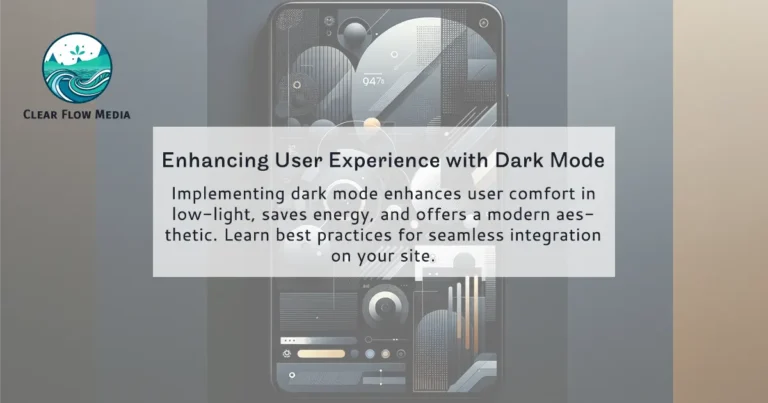Improve Your SEO with Long-Tail Keywords
Long-tail keywords are essential tools for driving targeted traffic to your website. These longer, more specific phrases may have lower search volumes, but they offer higher conversion rates and less competition. Understanding and leveraging long-tail keywords can significantly enhance your SEO strategy, especially for small businesses looking to carve out a niche in the market.
Identifying Long-Tail Keywords
Identifying the right long-tail keywords involves a combination of intuition and data analysis. Begin by considering the specific needs and questions your target audience might have regarding your products or services. Think about the detailed phrases they might use when searching for solutions you provide. For instance, instead of the broad keyword “shoes,” consider “comfortable running shoes for women.”
Several tools can assist you in uncovering these specific phrases:
- Google’s Autocomplete: Start typing your broad keyword into Google and see what suggestions come up. These suggestions are based on actual searches, providing insight into what users are looking for.
- Answer the Public: This tool visualizes search questions and prepositions people use around your keyword. It can reveal common queries and concerns that your audience has, helping you tailor your content to address these points.
- SEMrush: A comprehensive SEO tool that helps in finding keyword variations and related searches. It offers detailed analytics on keyword difficulty, search volume, and trends, allowing you to make data-driven decisions.
By using these tools, you can identify a variety of long-tail keywords relevant to your business. Additionally, consider analyzing your website’s search query data from Google Search Console to discover long-tail keywords that are already driving traffic to your site.
Benefits of Long-Tail Keywords
Focusing on long-tail keywords brings numerous benefits to your SEO strategy. Here are a few key advantages:
Higher Conversion Rates
Long-tail keywords often indicate a higher level of user intent. Users searching for these phrases typically know exactly what they are looking for and are further along in their buying journey. For instance, someone searching for “best eco-friendly running shoes for women” has a specific need and is likely ready to make a purchase decision. This specificity leads to higher conversion rates compared to more generic searches.
Additionally, because these users have a clear idea of what they want, your content can be more focused and persuasive, directly addressing their needs and guiding them toward conversion.
Reduced Competition
Long-tail keywords tend to have less competition than broader terms. While fewer people search for these specific phrases, those who do are more likely to engage with your content and convert. This reduced competition means you can achieve higher rankings with less effort than trying to rank for highly competitive broad keywords.
Furthermore, because these keywords are less competitive, the cost-per-click (CPC) in paid search campaigns is often lower, making it a cost-effective strategy for small businesses with limited marketing budgets.
Targeting Niche Audiences
By focusing on long-tail keywords, you can target niche segments of your market. This strategy is particularly beneficial for small businesses aiming to attract highly targeted traffic. For example, a small bakery might use the keyword “vegan gluten-free chocolate cake recipe” to draw in a specific audience interested in those unique offerings.
Targeting niche audiences can also help in building a loyal customer base. When users find content that precisely matches their search intent, they are more likely to return to your site and recommend it to others.
Implementing Long-Tail Keywords in Your Content
Once you have identified relevant long-tail keywords, the next step is to incorporate them effectively into your content. This involves more than just placing these keywords throughout your text; it requires creating comprehensive, valuable content that directly addresses the needs of your audience.
Creating Comprehensive Content
Develop content that thoroughly addresses the questions and needs associated with your long-tail keywords. For instance, if you are targeting “how to choose the best ergonomic office chair,” create a detailed guide covering everything from ergonomic benefits to top product recommendations. Comprehensive content that answers users’ queries in-depth will rank better and provide more value to your audience.
Additionally, including multimedia elements such as images, videos, and infographics can enhance the user experience and make your content more engaging. For example, a video demonstration of ergonomic features or an infographic comparing different office chair models can provide added value.
Utilizing Keywords in Strategic Locations
Strategically place your long-tail keywords in titles, headings, meta descriptions, and throughout the body of your text. However, avoid keyword stuffing, which can harm readability and SEO performance. Aim for natural integration of keywords to maintain a smooth flow of information.
Ensure that your keywords are also used in image alt text, URLs, and internal links. This not only helps with SEO but also improves accessibility for users with disabilities, providing a better overall user experience.
Creating Targeted Blog Posts
Consider writing blog posts that focus on specific long-tail keywords. Each post can address a unique aspect of your products or services, providing detailed information and answering specific user queries. For example, a blog post titled “Top 10 Comfortable Running Shoes for Women” can target a long-tail keyword while offering valuable insights to your readers.
Regularly updating your blog with fresh content that targets new long-tail keywords can keep your site relevant and improve your search rankings. Use a content calendar to plan your posts and ensure a steady flow of new content.
Tracking and Adjusting Your Strategy
Monitoring the performance of your long-tail keywords is essential to ensure their effectiveness. Use tools like Google Analytics and Google Search Console to track metrics such as organic traffic, bounce rates, and conversion rates. Analyze this data to identify which keywords are driving the most traffic and conversions.
Regular Keyword Audits
Conduct regular keyword audits to reassess the performance of your long-tail keywords. Review which keywords are performing well and which may need adjustment. Update your content to reflect changes in search trends and user behavior, ensuring that your site remains relevant and competitive.
A keyword audit should also include analyzing your competitors’ keyword strategies. Tools like Ahrefs can help you see what long-tail keywords your competitors are ranking for and identify opportunities for your own site.
Adjusting Your Content Strategy
Based on your analysis, adjust your content strategy to better align with successful long-tail keywords. This might involve creating new content, updating existing posts, or shifting focus to emerging trends within your niche. Continuous improvement and adaptation are key to maintaining a strong SEO presence.
Consider creating pillar pages that cover broad topics in-depth and link to more specific blog posts targeting long-tail keywords. This structure can improve your site’s navigation and help search engines understand the relevance of your content.
Focusing on long-tail keywords is a strategic approach to SEO that can yield significant benefits. By targeting specific phrases with high user intent, you can attract more qualified traffic, reduce competition, and achieve higher conversion rates. Implement these strategies to harness the power of long-tail keywords and enhance your website’s performance.




